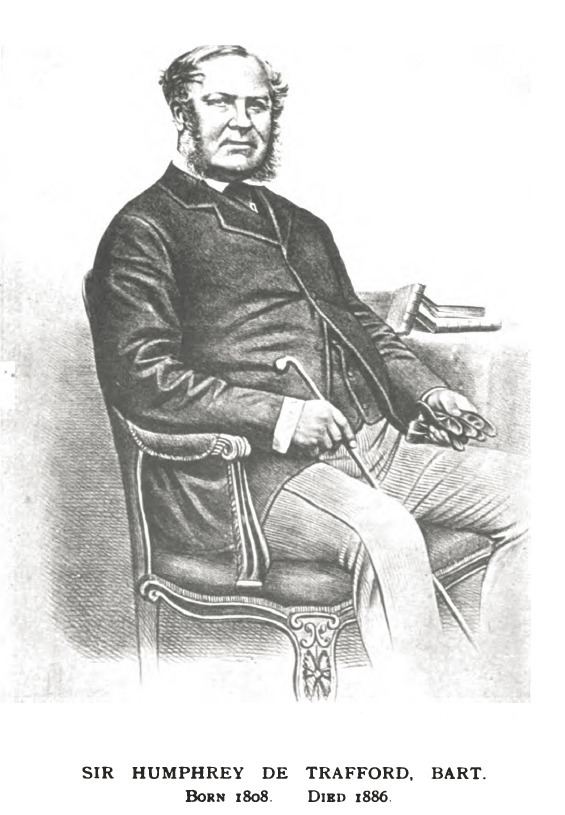Name Sir de Died May 4, 1886 | Parents Thomas de Trafford | |
 | ||
Children Sir Humphrey de Trafford, 3rd Baronet Great grandchildren Dermot de Trafford, Ann Parker Bowles | ||
Sir Humphrey de Trafford, 2nd Baronet (1 May 1808 – 4 May 1886) was a prominent English Catholic. Born at Croston Hall near Chorley, Lancashire on 1 May 1808, he was the fourth child and the eldest son of Sir Thomas de Trafford.
Contents
Early life
In 1821 he was entered as a pupil at the Manchester Grammar School and became a boarder in the high master's house. He also studied at Oscott College, a Catholic seminary. In 1826 he entered the Royal Dragoons, becoming a lieutenant in 1830, and retiring in 1832. He is recorded as having placed the last keystone in position for the Victoria Bridge, connecting Manchester and Salford across the River Irwell, on 23 March 1839. On the death of his father, on 10 November 1852, he became the 2nd Baronet de Trafford, 25th Lord of Trafford, and took up residence at the family home of Trafford Hall, in Trafford Park.
On 17 January 1855, he married Lady Annette Mary Talbot, eldest sister and co-heiress of Bertram Talbot, 17th Earl of Shrewsbury. The ceremony took place in Rugby, Worcestershire, and was performed by William Bernard Ullathorne, Bishop of Birmingham. It was reportedly the first Roman Catholic nuptial mass to be performed in England since the Reformation. They had five daughters and three sons:
The national land survey of 1873 records Sir Humphrey as holding 1,990 acres (810 ha) of land in Cheshire, producing an annual gross rental income of £3,361. In 1861 he served as High Sheriff of Lancashire
In 1881, he bought Hothorpe Hall in Theddingworth, Leicestershire and presented it to his son Charles. The de Traffords purchased the hall from Henry Everett, great-nephew of John Cook, the hall's builder.
In 1884, the Lancashire and Cheshire Antiquarian Society, at its meeting on Friday 11 January, recorded the receipt from Sir Humphrey of the head of a stone hammer found in 1860 in a drain ditch at Blackshaw Farm near Alderley Edge.
Manchester Ship Canal
In 1882, a meeting held at the Didsbury home of engineer Daniel Adamson resulted in the creation of the Manchester Ship Canal committee. Sir Humphrey was an implacable opponent of the proposed canal, which the committee proposed would cross his land at Trafford Park. He objected, among other grounds, that it would bring polluted water close to his residence, interfere with his drainage, and render Trafford Hall uninhabitable, forcing him to "give up his home and leave the place". Despite his opposition, the Ship Canal Bill became law on 6 August 1885, after two previous Bills had failed to get through Parliament. Sir Humphrey was paralysed in 1884 and never recovered. He died on 4 May 1886, three days after his 78th birthday. Construction of the Manchester Ship Canal began the following year.
